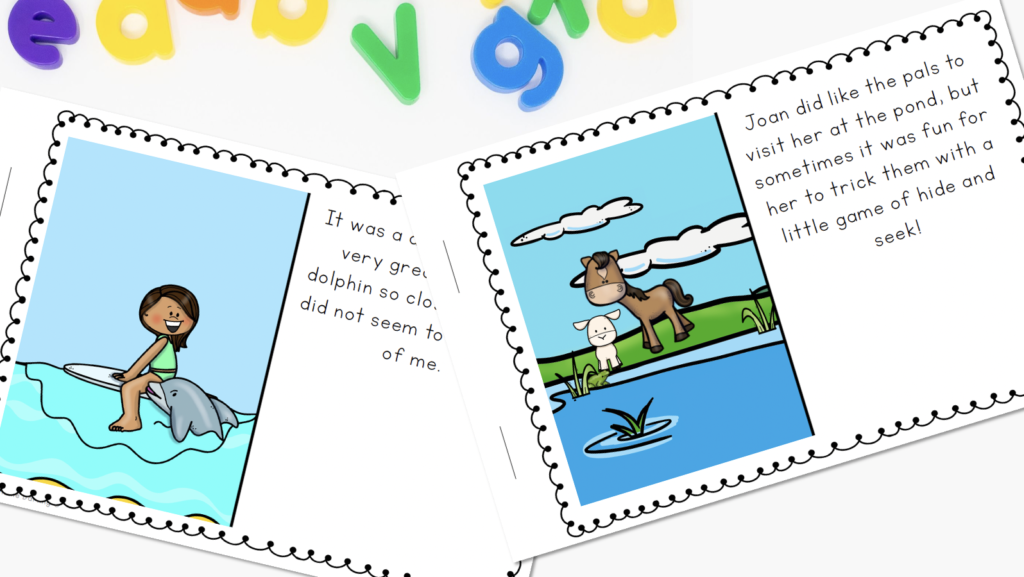The Science Behind Phonics Instruction: Strategies for Effective Teaching
Are you ready to unlock the secrets of effective phonics instruction? In the world of education, phonics has long been recognized as a crucial component of early reading instruction. But what exactly is the science behind phonics, and how can teachers use this knowledge to enhance their teaching strategies? In this captivating article, we will delve into the fascinating world of phonics instruction, exploring the research-based strategies that have been proven to be most effective in helping students master phonics skills.
From phonemic awareness to decoding and blending, we will uncover the essential building blocks of phonics instruction and how they contribute to reading success. Whether you’re an experienced teacher looking to fine-tune your phonics lessons or a new educator seeking a solid foundation in phonics instruction, this insightful article is sure to provide you with the tools, tips, and techniques you need to make your phonics lessons engaging, impactful, and highly effective. So, let’s embark on this exciting journey into the science behind phonics instruction and unlock the keys to unlocking reading success!
The importance of phonics in reading development
Phonics, the relationship between sounds and letters, plays a vital role in reading development. It is the foundation upon which young learners build their reading skills. Phonics instruction helps children understand the alphabetic principle, which is the understanding that letters represent sounds. By teaching children to recognize and manipulate the sounds in words, phonics instruction enables them to decode unfamiliar words and become more proficient readers.

Research has consistently shown that phonics instruction is essential for reading success. According to the National Reading Panel, an expert panel convened by the U.S. Congress, systematic and explicit phonics instruction significantly improves children’s ability to understand and use the alphabetic principle. In fact, the panel found that phonics instruction is most effective when it begins in kindergarten or first grade and is taught in a structured, sequential manner.
Phonics instruction is not only crucial for beginning readers but also for struggling readers. It provides them with the necessary tools to decode words and develop fluency, which is essential for comprehension. By explicitly teaching the relationship between sounds and letters, phonics instruction empowers struggling readers to overcome their difficulties and become proficient readers.
The Science behind phonics instruction
Phonics instruction is grounded in decades of research on how children learn to read. It is based on the idea that reading is a complex cognitive process that involves the integration of various skills, including phonemic awareness, decoding, and blending.
Phonemic awareness is the ability to hear, identify, and manipulate individual sounds, or phonemes, in spoken words. It is a critical precursor to reading and is strongly correlated with reading achievement. Research has shown that children who have a strong foundation in phonemic awareness are more likely to become successful readers.
Decoding is the process of translating written words into spoken words. It involves using knowledge of letter-sound correspondences to sound out words. Decoding is a fundamental skill in reading and is essential for word recognition and comprehension.
Blending is the process of combining individual sounds to form words. It is the opposite of decoding and is crucial for reading fluency. By blending sounds together, readers can quickly and accurately recognize words and understand their meaning.
Different approaches to teaching phonics
There are several different approaches to teaching phonics, each with its own strengths and weaknesses. The most common approaches include synthetic phonics, analytic phonics, and analogy-based phonics.
Synthetic phonics is a systematic approach that teaches children to decode words by blending individual sounds. It starts with simple letter-sound correspondences and gradually progresses to more complex ones. Synthetic phonics instruction is highly structured and explicit, providing students with a step-by-step guide to reading.
Analytic phonics, on the other hand, takes a more holistic approach. It starts with whole words or word families and teaches children to analyze the sounds and letters within those words. Analytic phonics instruction focuses on patterns and helps children develop word recognition skills.
An analogy-based phonics approach teaches children to use their knowledge of familiar words to decode unfamiliar words. It emphasizes the similarities between words and encourages children to apply their knowledge of word patterns and relationships.
While each approach has its merits, research suggests that synthetic phonics instruction is the most effective for teaching phonics skills. A meta-analysis of over 70 studies conducted by the National Reading Panel found that synthetic phonics instruction consistently produced the best results in improving children’s word recognition and reading comprehension skills.
Strategies for effective phonics instruction
Now that we understand the importance of phonics instruction and the science behind it, let’s explore some strategies for making phonics instruction more effective and engaging for students.
1. **Provide explicit instruction:** Phonics instruction should be explicit and systematic, providing students with clear explanations and guided practice. Teachers should explicitly teach letter-sound correspondences, phonemic awareness skills, and decoding strategies. They should also model the process of blending and segmenting sounds.
2. **Use multisensory techniques:** Incorporate multisensory techniques into phonics instruction to engage different learning styles. For example, have students trace letters in sand or use magnetic letters to build words. By engaging multiple senses, you can enhance students’ understanding and retention of phonics skills.

3. **Make it interactive:** Phonics instruction should be interactive and hands-on. Use games, puzzles, and other interactive activities to make learning phonics fun and engaging. For example, play “Word Bingo” or “Phonics Twister” to reinforce letter-sound correspondences and blending skills.
5. **Integrate phonics into reading and writing:** Phonics instruction should be integrated into the broader literacy curriculum. Provide opportunities for students to apply their phonics skills in reading and writing activities. Encourage them to use the decoding strategies they have learned to read and write words and sentences.
6. **Provide ample practice:** Phonics skills require practice to become automatic. Provide students with ample opportunities to practice their phonics skills through reading, writing, and word work activities. Use decodable texts and word lists that align with the phonics skills being taught.
By implementing these strategies, teachers can create engaging and effective phonics lessons that help students develop strong reading skills and a love for learning.
Incorporating phonics into the classroom curriculum
Phonics instruction should be an integral part of the classroom curriculum. Here are some ways to incorporate phonics into your daily instruction:
1. **Phonics warm-up:** Start each day with a phonics warm-up activity to review previously taught skills and introduce new ones. This can be a quick game or exercise that gets students actively engaged in phonics.
2. **Word work stations:** Set up word work stations where students can practice phonics skills independently or in small groups. Provide activities such as sorting word families, building words with letter tiles, or completing phonics worksheets.

5. **Writing activities:** Encourage students to apply their phonics skills in their writing. Provide prompts or sentence frames that require students to use specific phonics skills in their writing. For example, ask them to write a sentence using words from a specific word family.
By integrating phonics into various aspects of the curriculum, you create a rich and immersive learning environment where students can practice and apply their phonics skills in meaningful ways.
Tools and resources for phonics instruction
There are many tools and resources available to support phonics instruction. Here are some popular ones:
1. **Phonics manipulatives:** Magnetic letters, letter tiles, and other manipulatives can be used to build words and reinforce phonics skills. These hands-on tools provide a tactile and kinesthetic learning experience.

3. **Phonics games:** There are many board games and card games available that focus on phonics skills. These games provide a fun and interactive way for students to practice and reinforce their phonics skills.
When choosing tools and resources for phonics instruction, consider the needs and interests of your students. Look for materials that align with your instructional goals and provide opportunities for meaningful practice and reinforcement.
Common challenges in phonics instruction and how to overcome them
Phonics instruction can sometimes present challenges for both teachers and students. Here are some common challenges and strategies for overcoming them:
1. **Lack of time:** With so many other subjects to cover, finding time for dedicated phonics instruction can be a challenge. To overcome this, integrate phonics into other literacy activities, such as shared reading and writing.
2. **Student engagement:** Some students may find phonics instruction repetitive or boring. To increase engagement, make phonics lessons interactive and hands-on. Use games, puzzles, and other activities to make learning phonics fun and engaging.
3. **Differentiated instruction:** Meeting the diverse needs of students can be challenging. Differentiate instruction by providing additional support for struggling readers and enrichment activities for advanced readers. Use assessment data to inform your instructional decisions.
4. **Transfer of skills:** Students may struggle to transfer their phonics skills to authentic reading and writing. Provide opportunities for students to apply their phonics skills in meaningful contexts and provide feedback and support as needed.
5. **Limited resources:** Lack of access to quality resources can hinder phonics instruction. Seek out free or low-cost resources online and collaborate with colleagues to share materials and ideas.
By being aware of these challenges and implementing appropriate strategies, teachers can overcome them and create a positive and effective phonics learning environment.
Assessing phonics skills and progress
Assessment is an essential component of effective phonics instruction. It helps teachers identify students’ strengths and areas for improvement and informs instructional decision-making. Here are some assessment strategies for assessing phonics skills and progress:
1. **Informal observation:** Observe students during phonics activities and note their ability to apply phonics skills independently. Take anecdotal records to track progress over time.
2. **Running records:** Use running records to assess students’ ability to decode and comprehend text. Record errors and self-corrections to identify patterns and areas for instruction.
3. **Phonics assessments:** Administer phonics assessments, such as word lists or decodable text passages, to assess students’ ability to decode words accurately. Use the results to group students for targeted instruction.
4. **Checklists and rubrics:** Use checklists or rubrics to assess students’ mastery of specific phonics skills. These tools provide a systematic way to track progress and identify areas for intervention.
5. **Portfolios:** Collect samples of students’ work, such as writing samples or reading passages, to document their progress in applying phonics skills. Review the portfolio regularly to track growth and identify areas for instruction.
Assessment should be ongoing and integrated into daily instruction. Use assessment data to inform your instructional decisions and provide targeted support and intervention as needed.
Conclusion: The impact of effective phonics instruction on reading proficiency
Phonics instruction is a critical component of early reading instruction. By teaching children the relationship between sounds and letters, phonics instruction enables them to decode unfamiliar words and become proficient readers. It is based on decades of research and has been proven to be effective in helping students develop strong reading skills.
By using research-based strategies, integrating phonics into the curriculum, and providing targeted instruction and support, teachers can make phonics instruction engaging, impactful, and highly effective. With the right tools, techniques, and resources, teachers can unlock the keys to reading success and empower their students to become confident and proficient readers.
So, whether you’re an experienced teacher looking to fine-tune your phonics lessons or a new educator seeking a solid foundation in phonics instruction, embrace the science behind phonics and embark on this exciting journey into the world of effective phonics teaching. Together, let’s unlock the power of phonics and help every child become a successful reader.

